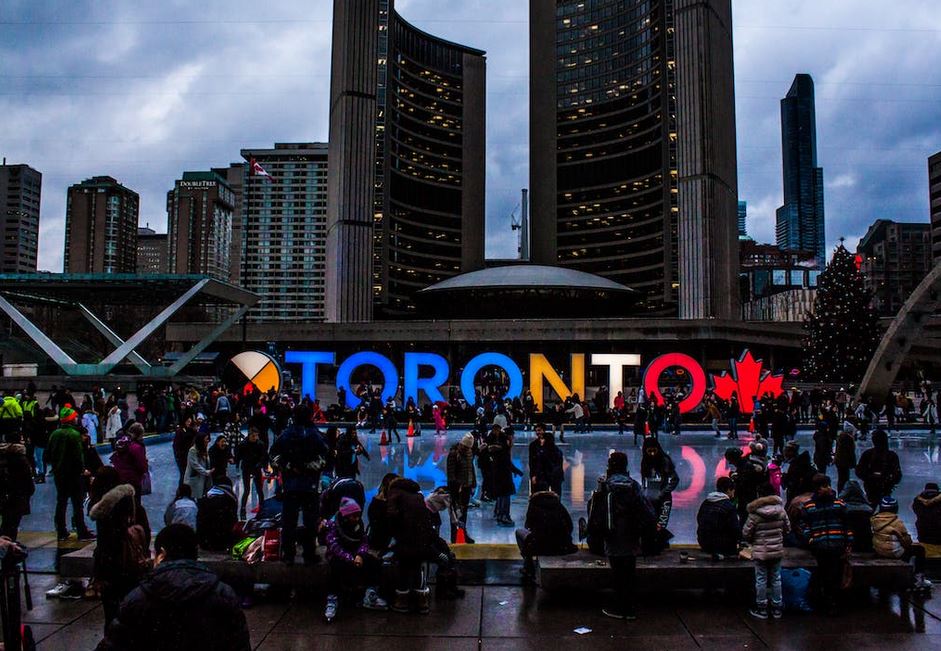
Have you ever found yourself at a crossroads, unsure of which path to take? This is the dilemma many Canadians (and new immigrants to Canada) are facing today due to the rising immigration numbers.
Canada prides itself on its diverse, immigrant-founded population. However, rising population levels are causing an increasing number of Canadians concerned about immigration and the sustainability of the government’s current policies.
As Canada welcomes over 300,000 immigrants annually, comprising nearly 1% of the population, some natives feel displaced in their own country.
The Canadians concerned about immigration are forced to consider difficult options.
Should one cling to hopes that government policies will change to address mounting worries, or is it better to seek prospects elsewhere while they’re still available?
To stay or to go amidst the rapidly rising numbers—that is the overarching question many natives now face.
This article will explore Canadians’ concerns over the impacts of immigration, the feasibility of waiting for policy reforms, and whether leaving may become the preferable option for some in this difficult debate.
Canadians Concerned about Immigration
Canada welcomed over one million immigrants in 2023, setting yet another record. In 2024, Canada’s newcomer target is 485,000 new permanent residents (PRs). In both 2025 and 2026, Canada aims to welcome an additional 500,000 immigrants (in each year). These are the highest levels in its history.
And these high volumes have also corresponded with a rise in public concerns from Canadians.
Many Canadians believe that Canada is accepting too many immigrants too fast and that this is putting pressure on the available resources, services, and infrastructure.
According to a recent survey by Ipsos, 54% of Canadians agreed that Canada is too welcoming to immigrants, up from 46% in 2020. Another survey by Ipsos in 2023 found that 39% of Canadians think the number of legal immigrants who are allowed to relocate to Canada should decrease.
But why do Canadians think that? Let’s have a detailed look at it.
A: The Housing Crisis
Sky-high housing costs are no laughing matter for locals struggling to find an unoccupied foot of space to call home.
According to Statistics Canada, the average home price in Canada reached $1.4 million in 2023, up from $678,000 in 2019. This represents a 106% increase in just four years, far outpacing the growth in income and inflation. And immigration is one of the factors that contribute to the demand for housing in Canada, as newcomers need a place to live and often aspire to homeownership.
According to a study by the Canada Mortgage and Housing Corporation, immigration accounted for 41% of the increase in housing demand in Canada between 2016 and 2019 and 82% of the increase in demand in Toronto and Vancouver. These two cities are the most popular destinations for immigrants, as they receive over half of all newcomers to Canada. They are also the most expensive housing markets in the country, with average home prices of $1.7 million and $1.6 million, respectively, in 2023.
The high demand for housing from immigration, coupled with the limited supply of new housing units, has led to a situation of housing unaffordability and inaccessibility for many Canadians, especially low- and middle-income households.

“It’s impossible to save enough for a down payment,” says Melissa, 32, who works in marketing in Vancouver. “Wages aren’t moving nearly as quickly as home prices. Many of my friends have given up hope of ever owning.”
Even renters are struggling, with purpose-built rental vacancy rates falling below 2% in major centers. Average one-bedroom rents in Toronto surpassed $2,500 per month while BC implemented rental caps, a sign of how dire conditions have become for many. With developers mainly focused on condo units, inadequate rental supply gets little attention amidst non-stop population growth.
The housing affordability crisis has serious implications for Canadians’ well-being and quality of life, as it is affecting their ability to meet their basic needs, save for the future, and participate in their communities. It also has negative consequences for the economy, as it is reducing the mobility and productivity of workers, discourages entrepreneurship and innovation, and increases the risk of financial instability and social unrest. Therefore, there is an urgent need for more balanced and sustainable planning to address Canada’s housing challenges, especially in light of the projected population growth due to immigration.
B: Labor Market
Immigration’s effects on jobs are complex, with arguments on many sides. While some sectors benefit from willing newcomer workers, others note depressed wages and uncertain job security when competition spikes sharply.
Younger Canadians vent frustrations about career obstacles yet are sloughed off as whiny. Might their concerns contain valid economic realities worth open discussion rather than denial? According to Statistics Canada, December 2023 saw a measly 100 jobs created. National Post does an excellent job at breaking down the stagnating labour market.
For example, in December: Statistics Canada’s labour force survey revealed that Canada added a total of 100 jobs in the final month of 2023.
This is even after the number of full-time jobs fell by 23,500 in December, only to be offset by a gain of 23,600 part-time jobs. With an estimated 500,000 NPR (Non Permanent Residents) coming into Canada for 2023, divided by 12, we would need to see approximately 40,000 jobs created to keep up with these immigration numbers.
However, we are far from it and finding work in Canada has been extremely difficult in 2023 and will continue in 2024.
C: The Healthcare Crisis
Canada’s universal public healthcare system is also showing signs of overload. According to the Fraser Institute, the average healthcare wait time reached 27.7 weeks in 2023, setting a new record high and continuing the upward trend in wait times across most medical specialties. Doctors there report a “perfect storm” of rising demand from population growth clashing with underfunding.
“We’re drowning,” says Susan, an ER nurse in Toronto. “Beds are constantly full. People line the halls for days. Staff are burning out trying to manage the influx, but we just don’t have the capacity or resources.”
Experts warn that continued high immigration without proper investment risks compromising quality and timely access to care over the long term.
Canadians Weighing Their Options
Many Canadians now find themselves in an uncomfortable position, weighing whether to remain in their homeland, optimistic for potential future improvements, or look elsewhere for affordable living and job opportunities.
Recent data reveals a trend that shows some Canadians are leaving the country in increasing numbers. In the first half of 2023 alone, approximately 42,000 individuals emigrated from Canada, representing a continuation of rising departure rates seen over the past few years.
When asked their reasons for contemplating leaving, Canadians cite concerns around rising costs of living, sluggish wage growth, environmental degradation, and an overheated real estate market out of reach for many young people. There is a perception that life in Canada is becoming less affordable and opportunities are shrinking, motivating some to seek solutions elsewhere.
Some Canadians may feel so overwhelmed by their immigration concerns that they may consider leaving the country altogether. According to a survey by Ipsos in 2021, 16% of Canadians said they would consider leaving Canada if they had the opportunity. This was an increase from 14% in 2019 and 12% in 2017. The survey also found that younger Canadians, aged 18 to 34, were more likely to consider leaving than older Canadians, aged 55 and over, with 24% versus 9% respectively.
The experiences of Canadians already emigrating highlight some of the pressures pushing others to also consider their options abroad:
James, 38, relocated with his family to Austin, Texas, in 2022 after struggling for years to afford a home in Vancouver despite a well-paying tech job. “Housing was impossible unless we wanted a 1-hour commute each way. The climate for young families just isn’t the same in Canada anymore.”
- Sarah, 29, moved to Sydney, Australia last year. As a recent nursing college graduate in Ottawa, she was discouraged by the prospects of 5+ year waitlists for full-time work and high costs of living. “The career opportunities and lifestyle are so much better for people my age down under.”
Michael, 42, emigrated to Barcelona, Spain, in 2021 with his Spanish wife and two kids after paying ever-increasing taxes in Toronto but seeing declining public services. “We’re much happier with the work-life balance and affordable housing here. Canada felt stressful just trying to get ahead financially.”
Their stories reflect the difficult choices facing many native-born Canadians wedged between patriotism and pragmatic life concerns as immigration levels continue rising.
The Call for Balanced Immigration Reform
To address Canadians’ legitimate concerns while maintaining the benefits of immigration, many experts argue Canada needs balanced policy reforms. Some key recommendations include:
Infrastructure Investment:
Increased funding should preempt higher immigration by expanding housing, transit, and healthcare services. The current approach risks outpacing infrastructure improvements, compromising the quality of life. Targeted investments ahead of population growth would relieve current pressures.
Annual Adjustments:
Rather than multi-year targets set in stone, immigration levels could be reviewed and adjusted annually based on evolving economic and labour data. If GDP growth or job numbers slip unexpectedly, intake could be lowered without stigma in a given year.
Regional Caps and Targets:
Immigration levels should consider regional differences in infrastructure capacity and labour market demands. Setting caps tailored for each province prevents overburdening certain areas. For example, focus more on new arrivals in Prairies cities with job openings and affordable housing over-saturation in Vancouver/Toronto.

Wrapping up
The immigration dilemma in Canada is real and multifaceted. And the concerns raised here aren’t intended to vilify immigrants or immigration in general but rather to shed light on the complexities involved. It is a call for a balanced approach to immigration that takes into consideration not only the economic benefits but also the social impact on the existing population.
With thoughtful planning sensitive to carrying capacity concerns, future generations may also experience the opportunities of affordable living their parents did. Canada’s successful integration story reminds us that compromise and mutual understanding are achievable through good faith on all sides. By prioritizing facts over fears, together, we can safeguard what we cherish most about this nation of immigrants ourselves.


Leave a Reply